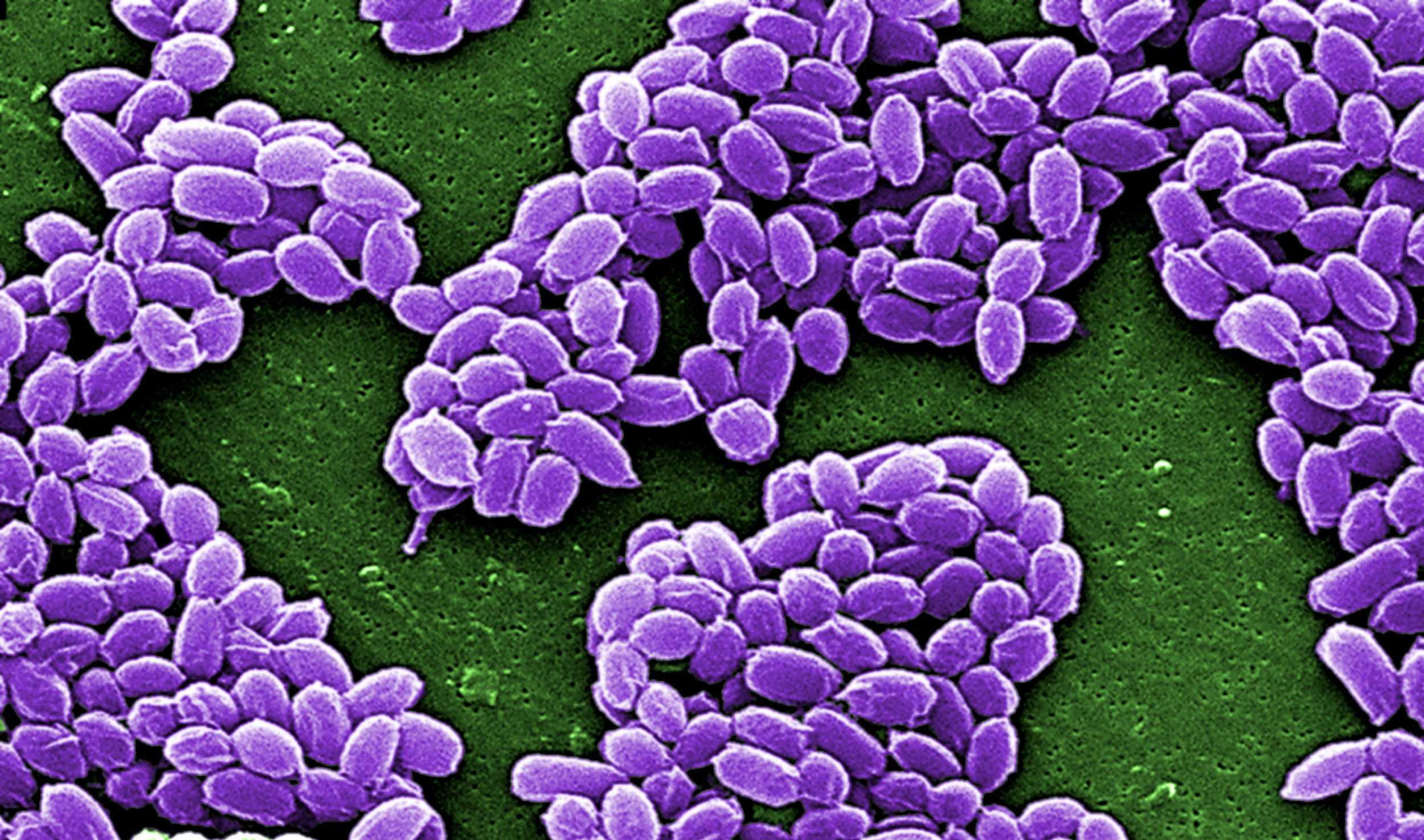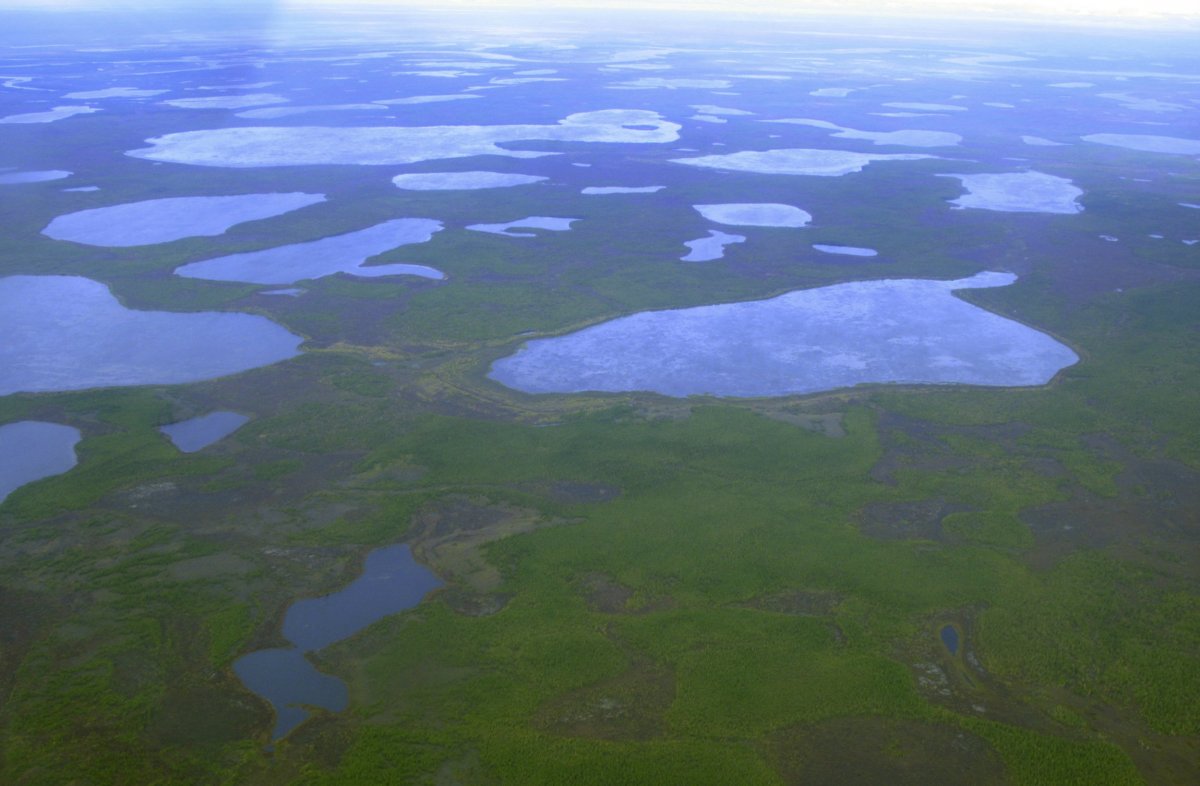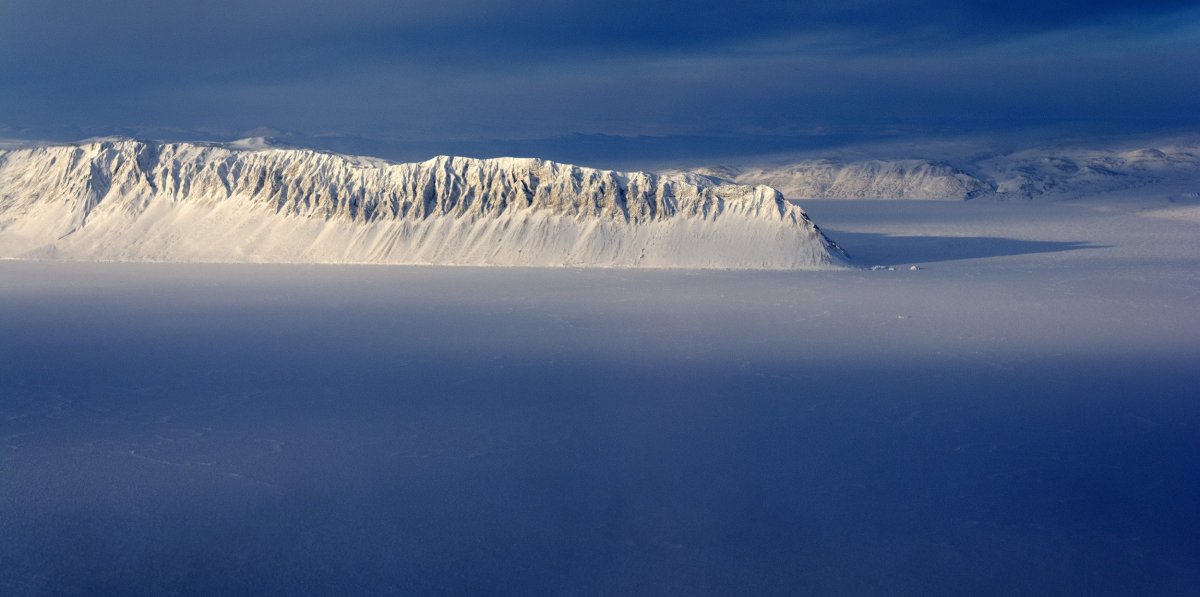
Thawing permafrost in the Arctic is one more way climate change will directly affect humans. As that permafrost melts, it could unleash potentially deadly pathogens. The potentially deadly pathogens hiding there are often dubbed "zombie diseases."
The seemingly long-gone pathogens linger in permafrost—mostly frozen ground which has "active layers" of soil where old muck of dead plants and animals are buried, rotting, and frozen. The Atlantic has just published a story explaining how these pathogens have been frozen away, safe and far from threatening human life, for tens of thousands of years. But those "active layers" of soil are going down deeper and spreading further north.

Two researchers, Jean-Michel Claverie and Chantal Abergel from the Aix-Marseilles University, have studied and discovered strange and massive viruses—one of which survived for 30,000 years frozen in the ice, reported The Atlantic.
The viruses these researchers study infect amoebas, and they're obviously looking for viruses that could harm humans. But digging deeper into the permafrost to prove how these pathogens can come back to life, even after thousands of years, reveals another danger of a warming climate should pathogens dangerous to humans be revived.
An outbreak of anthrax in Siberia last summer is suspected of originating from a thawing and decaying carcass of a reindeer. Claverie pointed out that it is not understood how Neanderthals went extinct, meaning there could be some unknown microbe lurking in a frozen state. And pathogens though to be long eradicated like smallpox could be hiding in the permafrost as well.
As Greenland explores mining efforts in these areas, Claverie told the The Atlantic that moving 16 million tons of permafrost that hasn't been touched in a million years is opening a can of worms—or a can of viruses and bacteria quite literally.
"We are really reaching places where, if there are microbes infectious to humans or human ancestors, we are going to get them," Claverie told The Atlantic.
Melting permafrost, caused by warming temperatures and longer summers, also appears to be exacerbated by flowing groundwater influenced by tundra wildfires, according to a study published in October. The study's results show that wildfires set off a process in which thawing permafrost causes groundwater to flow into more permafrost.
The pervasiveness of this process is still unknown. But since tundra wildfires increase with rising temperatures, groundwater is another way in which permafrost could melt quicker than previously understood.
In addition to the worrisome pathogens coming back to life after being frozen underground, buildings and infrastructure are threatened in Arctic towns, according to a report in Yale Climate Connections.
Homes, hospitals, and other buildings are built on top of the permafrost with piling, which are metal rods drilled into the ground for stability. The melting permafrost undermines those foundations—and one hospital project has invested in machines to keep the ground refrigerated all year round.

Thawing permafrost has been linked to oil spills, too—as an Alaskan well leaked for days was connected to the thawing permafrost in October.
In April, a BP oil and gas well leaked for days, reportedly releasing 45,000 kilograms of gas and 63 gallons of crude, reported Inside Climate News. Once that happened, an order to companies to review their wells was announced.
Though the well was one of BP's older ones, according to Inside Climate News, oil and gas wells are threatened if not protected from the thawing permafrost.
Uncommon Knowledge
Newsweek is committed to challenging conventional wisdom and finding connections in the search for common ground.
Newsweek is committed to challenging conventional wisdom and finding connections in the search for common ground.
About the writer
Sydney Pereira is a science writer, focusing on the environment and climate. You can reach her at s.pereira@newsweekgroup.com.
To read how Newsweek uses AI as a newsroom tool, Click here.








